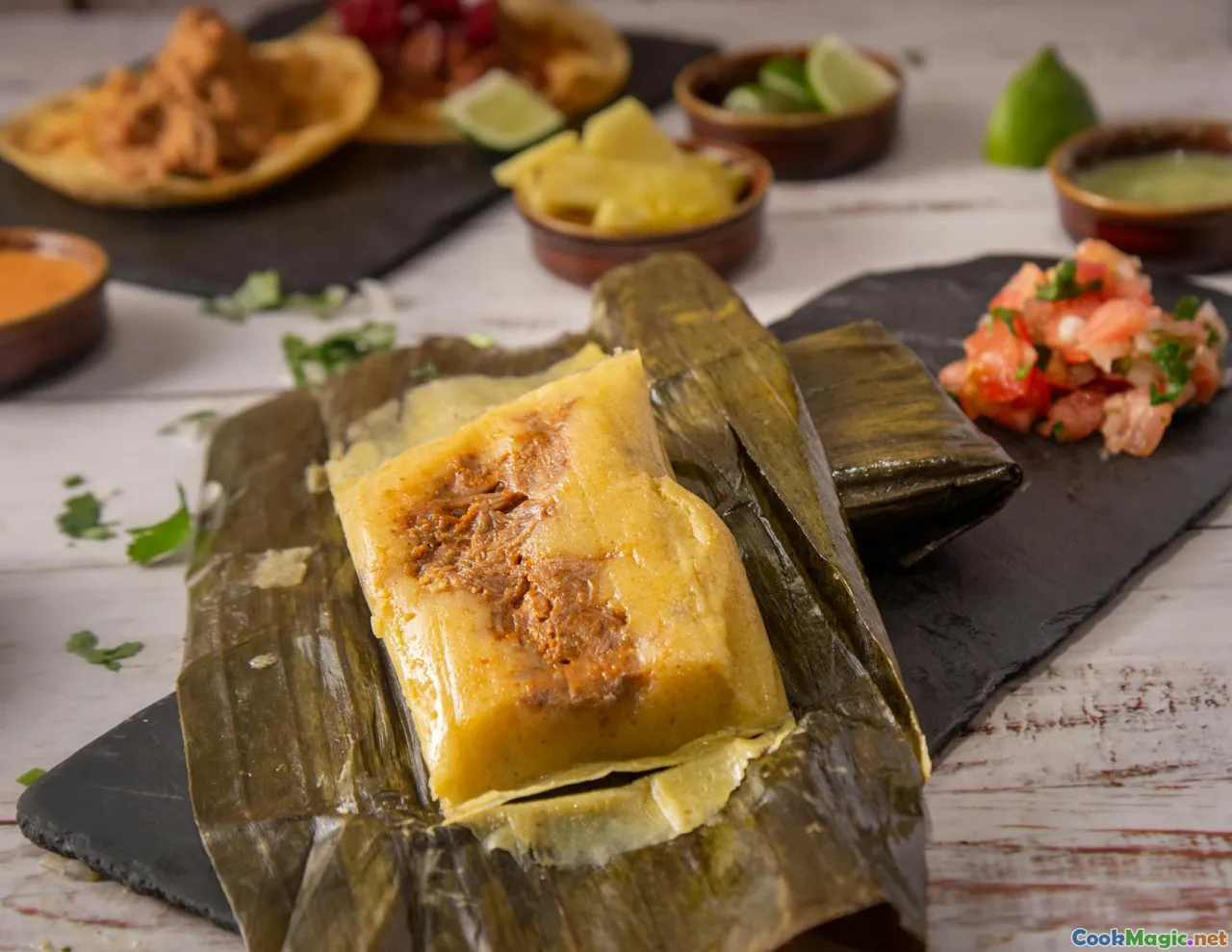Balancing Sweet and Savory in Tamal de Elote
8 min read Discover how Tamal de Elote masterfully balances sweet and savory flavors, reflecting Central American culinary artistry and cultural heritage. May 03, 2025 15:00
Balancing Sweet and Savory in Tamal de Elote
Imagine a warm, fragrant bundle of corn, soft yet textured, bursting with flavor that dances between sweet and savory. That’s the magic of Tamal de Elote, a beloved staple in Central American kitchens, especially in Guatemala and Honduras. This humble dish, often enjoyed as a snack or breakfast, exemplifies how simple ingredients can be transformed into a culinary masterpiece that resonates with cultural roots and personal memories.
An Introduction to Tamal de Elote: A Central American Classic
Tamal de Elote, sometimes called "sweet corn tamale," is a traditional dish crafted primarily from fresh corn, sugar, cheese, and spices. Unlike the more robust, meat-filled tamales found elsewhere in Latin America, this version emphasizes the natural sweetness of corn, balanced beautifully with savory elements like cheese and salt. Its origins trace back centuries, deeply intertwined with indigenous traditions and the influence of Spanish colonization.
In many households, preparing Tamal de Elote is more than just cooking; it’s a shared ritual, a way to connect generations through flavor and story. The aroma of steaming corn masa, mingled with the scent of butter and sweetened with cane sugar, fills the home, evoking nostalgia and warmth.
The Cultural Significance and History
Historically, maize has been the staple food of Mesoamerican civilizations—Maya, Aztec, and others—serving as a symbol of life and sustenance. Indigenous peoples prized corn not only for its nutritional value but also for its spiritual significance. Over time, recipes like Tamal de Elote evolved, blending indigenous techniques with colonial influences.
In Guatemala, tamales are more than food; they are integral to festivals, religious ceremonies, and communal gatherings. Tamal de Elote, in particular, stands out for its delicate balance of flavors, embodying the duality of Central American culinary identity—rich, hearty, yet simple and soulful.
The Art of Balancing Flavors: Sweet Meets Savory
At the heart of Tamal de Elote lies a delicate equilibrium. Achieving the perfect harmony involves more than just tossing ingredients together; it requires a nuanced understanding of flavors and textures.
The Sweet Element
Sweetness in Tamal de Elote comes primarily from fresh corn and added sugar or piloncillo (unrefined cane sugar). The natural sugars in corn provide a subtle sweetness that, when complemented with a touch of sugar, elevates the dish to a comforting dessert-like experience. Some recipes incorporate sweetened condensed milk or honey for extra richness.
The Savory Touch
Counteracting the sweetness is the addition of cheese—traditionally fresh queso fresco or queso blanco—which lends a mild saltiness and creamy texture. Spices like cinnamon and sometimes a dash of black pepper add depth, while a hint of salt balances the sweetness and enhances the overall flavor profile.
The Texture Play
The masa (dough) should be tender yet hold together, with a moist, slightly crumbly crumb. The incorporation of butter or lard enhances richness, while shredded cheese provides a subtle gooeyness. The steaming process creates a moist, aromatic bundle that invites exploration with every bite.
Techniques for the Perfect Tamal de Elote
Creating an ideal Tamal de Elote requires patience and attention to detail. Here are some essential tips:
- Fresh Corn is Key: Using freshly grated or processed corn kernels ensures a vibrant flavor and tender texture.
- Balance the Sweetness: Taste the masa before wrapping; it should be sweet but not overpowering. Adjust sugar levels accordingly.
- Choose Quality Cheese: Fresh, mild cheese like queso fresco or queso blanco complements the corn without overwhelming it.
- Proper Steaming: Wrap the tamales tightly in banana leaves or corn husks to retain moisture and impart subtle flavor notes.
- Test for Doneness: The tamal is ready when the masa is firm but moist and easily separates from the wrapper.
Personal Reflections and Variations
Having visited local markets in Guatemala, I’ve seen how families take pride in their recipes, often passing down secret ingredients or techniques. Some add a splash of vanilla or nutmeg for an aromatic twist, others incorporate a dash of chili powder for a spicy contrast.
In my experience, one of the most delightful variations involves mixing in a handful of sweet corn kernels into the masa, adding bursts of texture and flavor. Serving Tamal de Elote with a drizzle of honey or a side of tangy curtido (pickled cabbage) elevates the experience, highlighting the interplay between sweet and savory.
The Social and Festive Role
In Central American culture, Tamal de Elote is more than a dish—it's a symbol of community and celebration. During festivals, family gatherings, or religious holidays, large batches are prepared, shared, and enjoyed together. The act of wrapping each tamal is often a communal event, fostering bonds and passing down culinary traditions.
Final Thoughts: A Culinary Bridge
Balancing sweet and savory in Tamal de Elote exemplifies the ingenuity of Central American cuisine—a dance of flavors that honors tradition while inviting innovation. It reminds us that the most memorable dishes are those that embrace contrasts, inviting us to savor the complexity of life, culture, and history.
Whether enjoyed as a humble snack or a festive centerpiece, Tamal de Elote offers a taste of Central America’s rich culinary tapestry—sweet, savory, warm, and utterly comforting. So next time you encounter this delightful delicacy, take a moment to appreciate the harmony of flavors and the stories woven into every bite.









